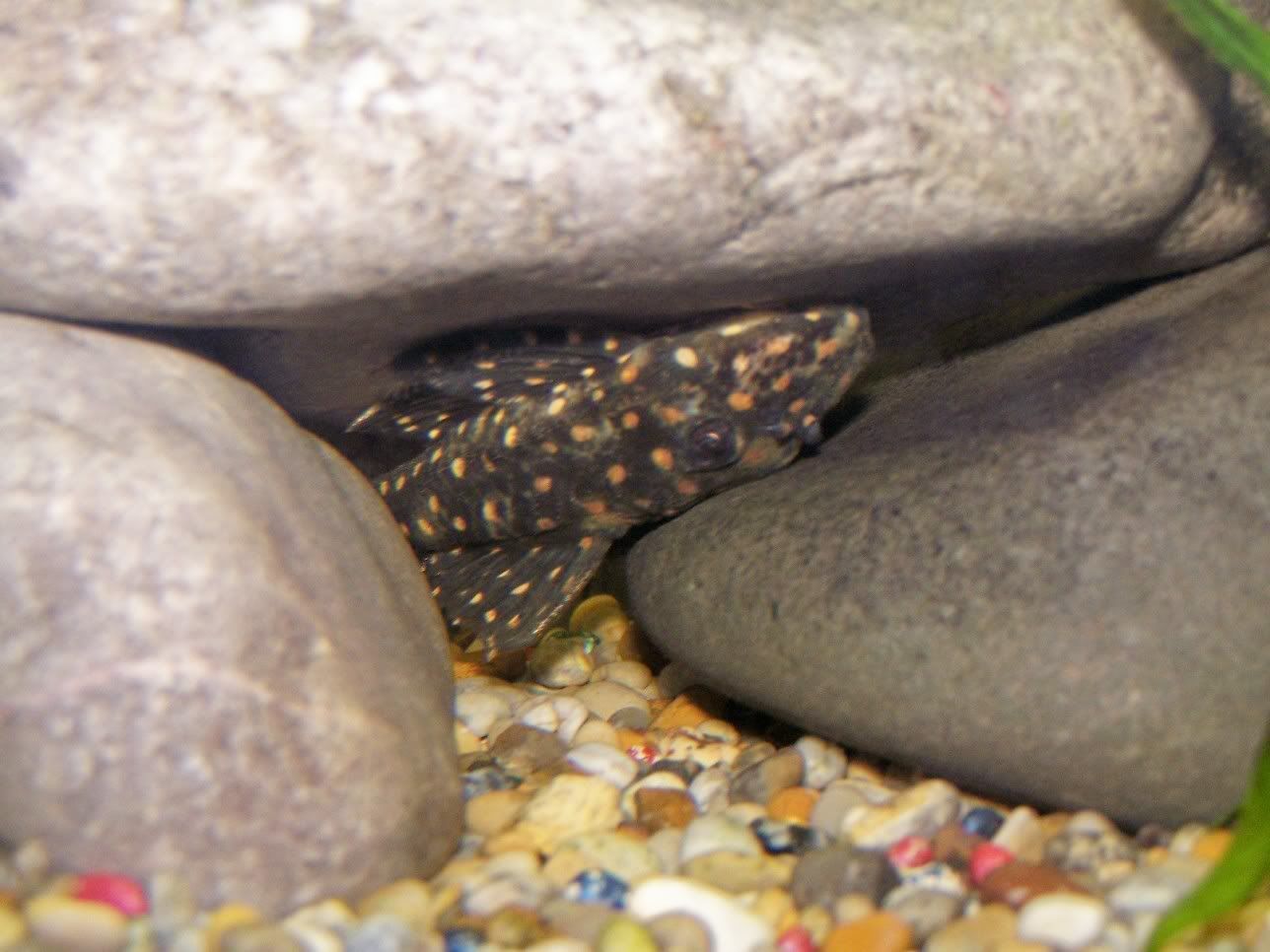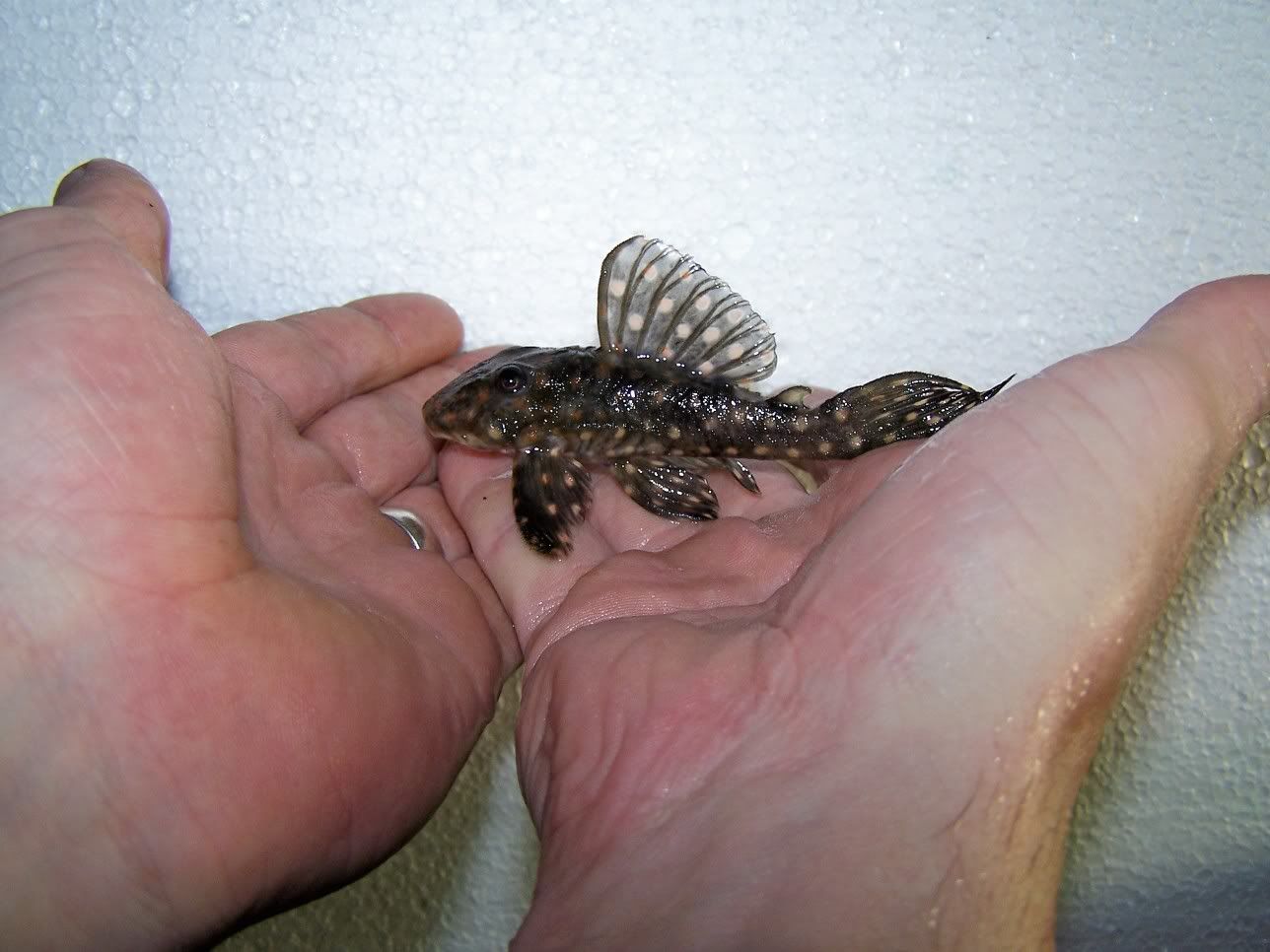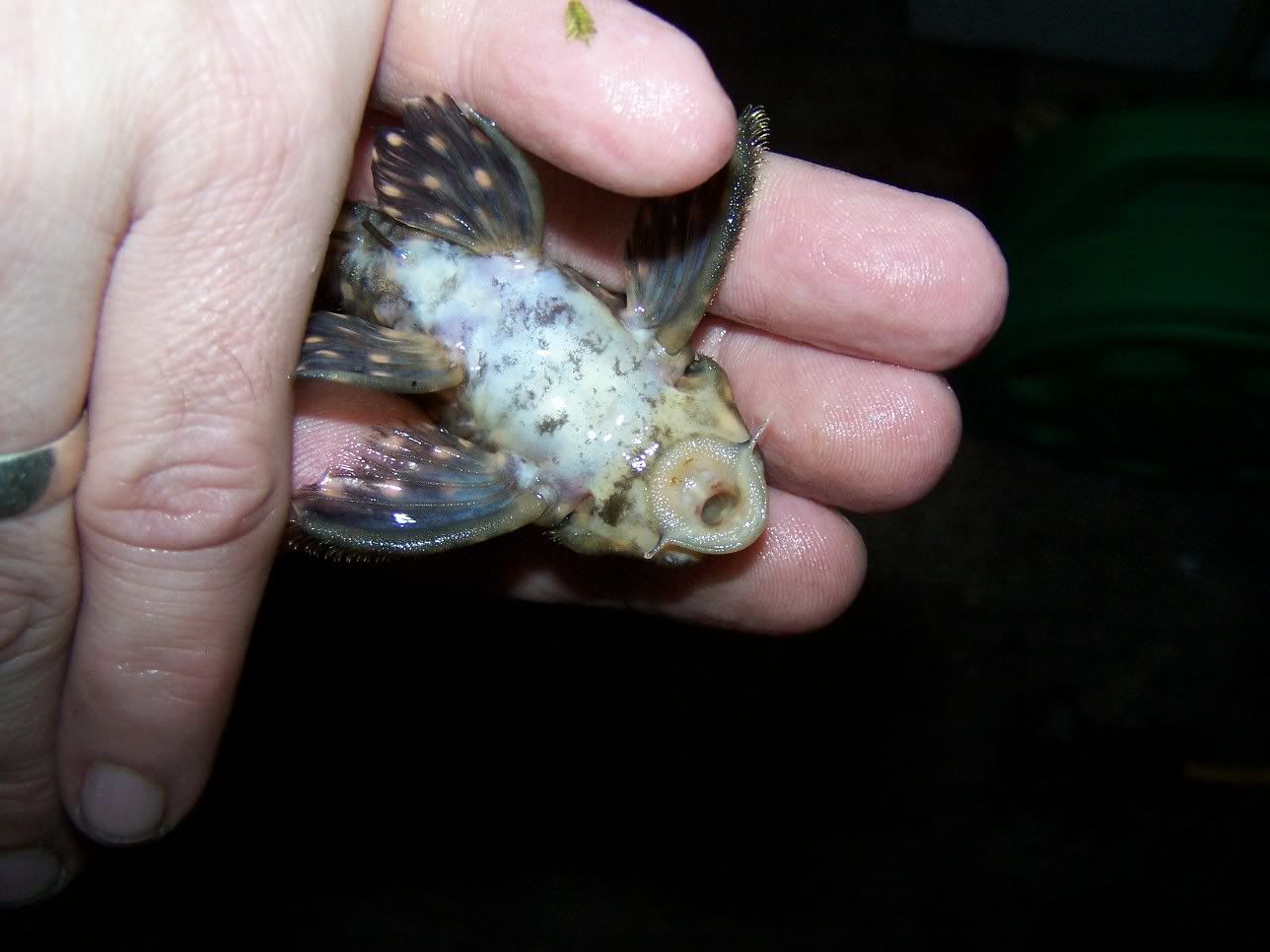

Cant find this fish listed anywhere, any ideas chaps?He is about 3" long and lives in that cave even though there is wood in the tank with him.


Hi,I've checked out all the photo archieves on site for "Hypancistrus inspector" and am pretty sure its not one of them .Could it really be a crossbreed?I will try to get a better picture on here soon.pleco_breeder wrote:I cannot say for sure, but this looks very similar to some of the fish that I got with a L201 "Hypancistrus inspector" import. Most of the fish in the shipment showed the more common gold dots, but a few of the "nicer" ones had the red spotting on the upper part of the body. The fish will cross-breed with the standard L201. The fry, until they develop all of their black color, approximately 2 weeks after the yolk is gone, look very similar to L340. Because of that, I had at one point hypothesized that L340 will eventually be found to be a variant of Hypancistrus inspector.
Larry Vires
The pics in the archive are of Brown fish with yellow spots or black fish with white spots,this is a black fish with gold spots .Do they vary that much and still be considered the same species? Anyway just hoiked him out for some more picsJools wrote: Without seeing the teeth it looks like Hypancistrus inspector to me, what do the teeth look like and why do you say it's not this species as it sure looks like it to me.


Absolutely. Coloration is often a poor feature to use (esp. with loricariids) for identification purposes as many fish change colors based on mood, substrate, lighting, and water conditions. There are also many fish (once again loricariids among them) that change patterns and coloration as they mature. Finally, very few studies are done in ichthyology on range and natural physical variations among a species within its range.The pics in the archive are of Brown fish with yellow spots or black fish with white spots,this is a black fish with gold spots. Do they vary that much and still be considered the same species?
I'll just clarify that I don't think it is L102, but it's good to eliminate all options.This fish looks similar to the photo of L102 in DATZ